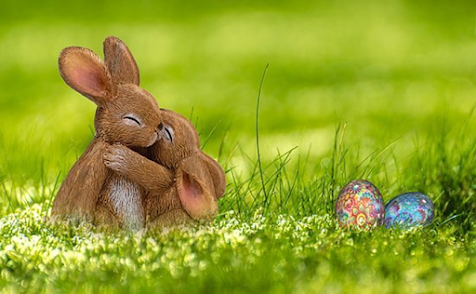Have you ever wondered where the Easter bunny came from?
Back in the 1700s, Germans emigrated to America and settled
in Pennsylvania. They started telling their neighbors the story of a special
bunny that came each spring to lay beautiful colored eggs.
Children began building nests to collect the eggs. They also
set out carrots in case the Easter Bunny got tired hopping from nest to nest.
Eventually, the eggs turned to chocolate, the nests became baskets, and people started giving gifts to each other.
How did Bunnies and Eggs Get Associated with Easter?
Spring is when flowers burst forth with color and chase away
the brown, barren landscape of winter.
Animals like deer, raccoons, skunks, otter, birds, and yes –
bunnies – have babies in the spring.
Eggs are a symbol of new life. Colored eggs point to the festive colors of
spring.
Spring is a new start, a new beginning. Why not celebrate
that?
A Question to Ponder
What if everything you did wrong was forgiven and forgotten?
How would you feel?
What would you do?
How would you live?
Forgiveness is a relief when someone grants it. It’s like
having your slate wiped clean and your bad behavior removed from your permanent
record.
Ask your students these questions. Maybe they have someone
they can forgive. Or maybe they can apologize to someone they’ve offended.
It might be a new beginning for one (or more) of their
relationships! What better way to remember Easter?
Give Someone a Basket
Who doesn’t love a gift?
Help your students show someone they care with an Easter
basket filled with gifts. It can be as simple as filling a few eggs with candy.
Maybe they can make a card to put inside. Whatever they do, it will be
beautiful – and appreciated.
Bonus points if you give baskets to people who might not get
one otherwise.
Thank you for reading. At Pure Fun,
we’re committed to helping you help your preschool students thrive all year
long. Happy Easter to you and yours!





















